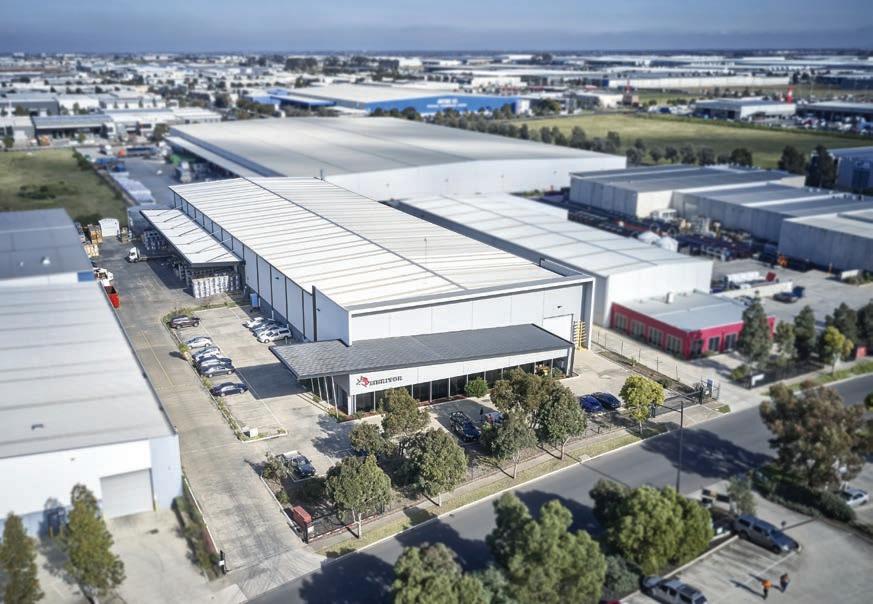
19 minute read
LOOKING BACK AT RAZORBACK



Barry ‘Sleepy’ Grimson has enjoyed a fulfilling life in road transport, commencing with tending horses to participating in the Razorback blockade and currently behind the wheel of a Kenworth Legend 900. Warren Caves catches up with the evergreen truck driver in Shellharbour, NSW
ASHORT HOUR-AND-A-HALF drive south of Sydney leads me to the quiet coastal hamlet of Shellharbour. My navigator announces, in her digitally sterile voice: “You have reached your destination.”
I had travelled here to interview Barry Grimson, although to most, he is more commonly known as ‘Sleepy’, a nickname given to him by his father.
If any additional confirmation was needed that I was at the correct address, I need look no further than the side fence adorned with the signage, ‘Razorback Range’ and ‘Truck Rest Area’. Yep, this is the place.
I am warmly greeted by an overall-wearing greyhaired gentleman who is in mid-conversation with a neighbour out for his morning walk.
I first met Sleepy in 2016, at the BP Marulan truck stop, in strikingly similar attire. Overalls are seemingly the trademark garment of choice for Sleepy, with the only variation being the colour. According to Sleepy, the overalls came to be after he completed a dangerous goods training course some time ago, during which the trainer explained that when transporting dangerous goods, drivers should be dressed appropriately at all times to attend to any spills or leaks should they occur.
Prior to this, Sleepy says he dressed predominantly in shorts and thongs and reasoned these did not suitably comply and, let’s face it, running from a chemical spill in your ‘jandals’ would be no easy task. Subsequently the trademark overalls were implemented and have stuck ever since.
After chatting for a bit I get the impression that Sleepy was perhaps a bit of a larrikin in his day and has quite a few stories of the good old days of trucking that might not necessarily be seen as responsible to print. He’s a truck driver through and through.
If there was any doubt that Sleepy was not a dedicated truck driver of high standing, the fact that his wife Leslie delivered a cuppa to him during our interview in a Highway 31 travel mug drove it home.
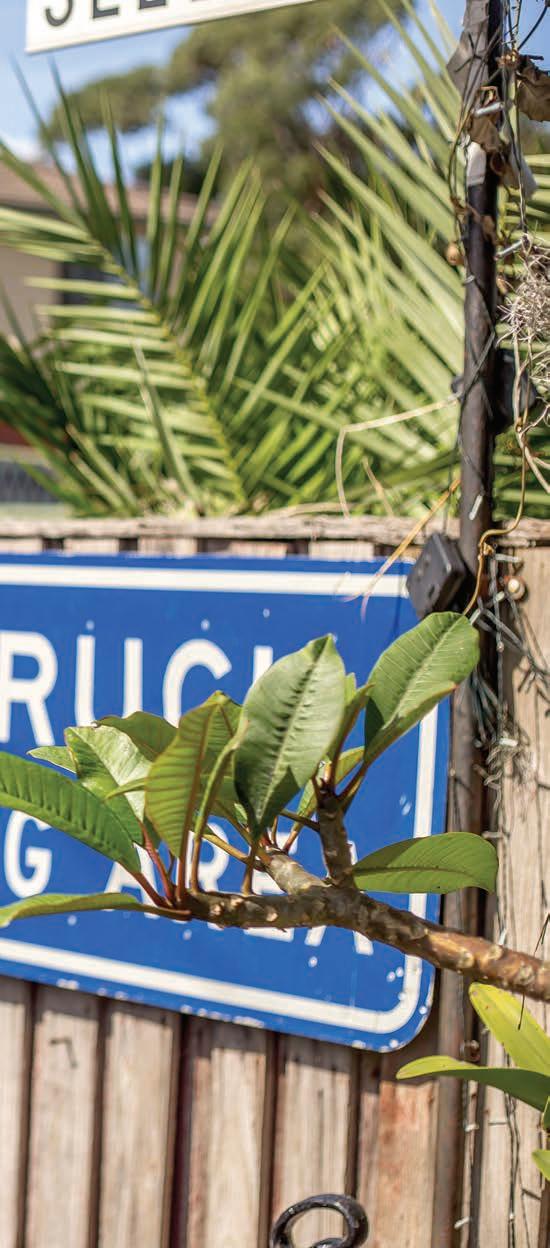
Four-legged horse power
Sleepy, a post-war baby, was born into a transport family in 1945. His grandfathers – and later his father – were originally involved in horse drawn freight cartage, with one of his grandfathers, Alex Grimson, having a team of 100 horses. Alex would cart building materials south from Sydney to somewhere along the track, meet up with other carriers carting wool and transfer loads for the return journey (who said changeovers were a recent tactic?).
Similarly, Sleepy’s other grandfather carted wood for charcoal among other things. Interestingly, according to Sleepy, both his grandfathers vehemently opposed this new-found mechanised transport system (trucks) that was evolving, citing that it would never last. In defiance, Sleepy says that neither of them ever got a licence to operate trucks when they did eventually prove as reliable as a horse.
Sleepy’s father fell into the transport business after spending his formative years tending the horse teams. He originally carted timber with trucks to Melbourne for Slazengers, before returning with cement. This proved a handy additional income to the family sawmill and hardware business operating from Liverpool. For a time, timber was also carted from the Blue Mountains west of Sydney across the Burragorang Valley.
As a result of hanging around yards and sheds with his dad, uncles and other drivers, Sleepy would sit around listening to stories from the road and fell in love with the romance and adventure. These stories entranced him to a point where his destiny had been set.
“I was washing trucks from about the age of six or seven, I wanted to do what these guys had done,” Sleepy recalls.
“At the age of 18 I got a truck licence and started driving for my dad and uncles, firstly in a Ford F600 truck. When I started driving, I was mixing with a lot of blokes looking for that adventure of truck driving; blokes who enjoyed what they did.”
Sleepy admits to in the early days having a lot of jobs: “It was quite unbelievable; I had heaps of different jobs working for Noel Peterson and Tony Napoli among others. I didn’t really settle down until my 40s,” he laughs.
Sleepy spent many years “working on the coal” as it was known, carting coal from the Burragorang Valley to the Glenlee Washery and down to the coast for export. The black gold had been carted out of the valley for decades but had begun a slow demise with the flooding of the Burragorang Valley in 1960 by the construction of Warragamba Dam to quench the thirst of a burgeoning Sydney population.
Valley Coal was, at the time, serviced by 200 subbies and 200 company trucks operated by Foxies (S&M Fox) and Clintons, before being bought out by Cluthers.
“The road down into Burragorang Valley was that narrow, that on the descent from Nattai westbound we would have to pick our spots to pull up if another loaded truck was coming the other way, then drive onto the wrong side of the road as
Below: Trucks converge on Razorback for the 40th anniversary of the blockade
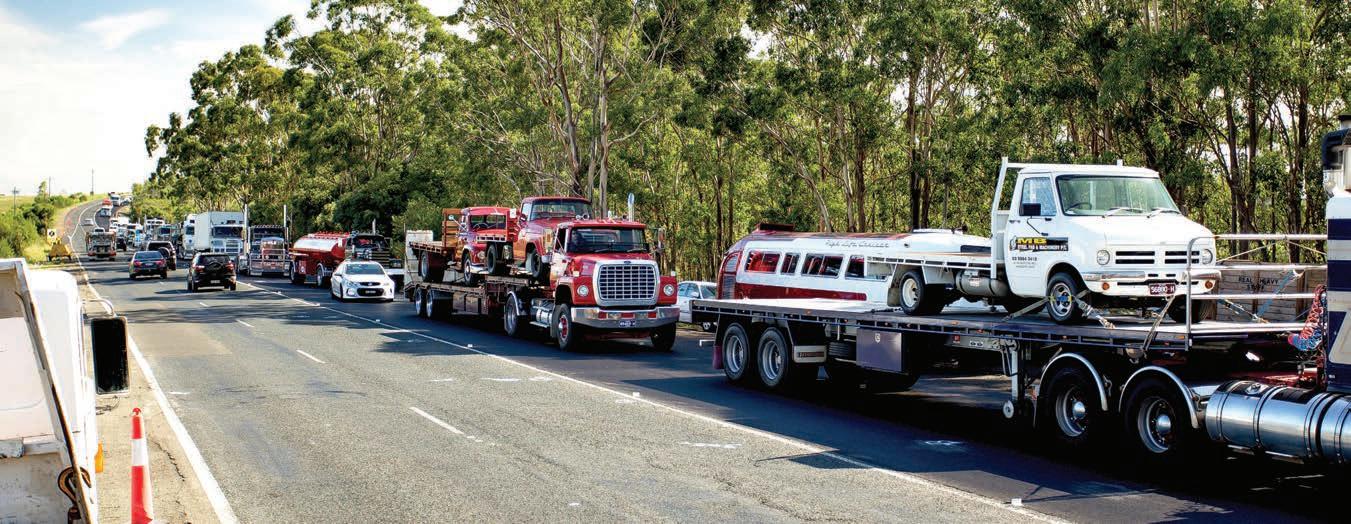

to not put the loaded truck too close to the road edge, which was at risk of dropping away under the weight,” he explains.
“Work was tough at times and if a coal truck broke down, we would shovel the 20-ton load from one truck to another.”
In contrast to today’s health and safety regulations, working on the coal could be a hazardous vocation.
“If they ran out of coal at ‘the pit’ we would sometimes jump into the hopper and shovel out the remaining coal in order to make up a load, all the while keeping a keen ear on the conveyor belt above, [which kept running] listening for the first of the next lot of coal coming down before scrambling swiftly out of the way when it did.”
Blockade prelude
It was during his time working on the coal that Sleepy gained experience in workplace industrial relations. “It was a unionised show and I became the delegate. That time as delegate for the coal drivers gave me the realisation that we should all get fair reward for what we did. The company paid the contractors well so that they could pay the drivers the award wage.
“While most of the contractors were good blokes, they did at times need reminding of what they were expected to pay the drivers.”
According to Sleepy, his dad was also known to challenge governing bodies on industry issues, being very vocal about having the Hume Highway upgraded at the infamous Tarcutta bog and other locations dating back to the early ’50s. Fighting for the transport industry it would seem for the Grimsons was somewhat genetic.
Around 1970 to ’72 saw Sleepy leave the coal game for different pursuits, including freezer van work for McGlashans of Mildura and many years working for Jimmy Bond on interstate. Eventually buying his own truck, an LNT Ford Louisville with a Cummins 903 under the bonnet. The year was now 1974.
Sleepy has many humorous tales of life on the road, such as tying his boot to the throttle pedal of an International ACCO he was driving because he had broken the return spring. This was the only way he could back off when needed.
All was going well until he was pulled up for a logbook check by the police at Kankool (Murrurundi, NSW), who asked him to get out of the cab. Sleepy replied: “I can’t, the boss ties me in here,” promptly opening the door to show the officer the shackles binding him to the trucks throttle pedal. Fortunately, the officer saw the funny side of the situation and Sleepy was sent on his way.
At the end of a particularly long week, Sleepy found himself northbound out of Picton in his Louisville for the final couple of hours before knocking off. With the big 903 sporting Lukey mufflers pulling up the hill and around the bend, the accompanying roar from the pipes scattered a bunch of cockatoos from their restful perches in the roadside trees. The screeching and frantic departure of the feathered flock brought bouts of laughter to Sleepy. The distraction was just what was needed to finish the run with his ‘bird-scarer’ engine living up to its name.
Sleepy had been operating his own truck for a few years but there was discontent simmering in the industry. Road taxes and what many saw as unfair competition from the rail transport sector (backed by the government of the day) were causing unrest. Tensions had been rising from the early ’70s with many letters and correspondence from concerned operators falling on deaf ears.
Without getting too political here and writing a complete history of the Razorback


Top: The Ted Stevens memorial parking bay at Razorback
Left: Sleepy taking a break at Marulan in 2016 with Unanderra Tanker Hire’s Kenworth T909
Below: A big line-up of trucks for Razorback’s40th anniversary blockade, I will paraphrase somewhat for this story.
According to Sleepy, the catalyst for the eventual blockade was the road tax, which was supposed to go into road and infrastructure funding, but was actually going into general revenue, leaving the roads in a less than satisfactory condition. Road transport was booming in direct competition with the rail network which the government was heavily invested in.
Some of the larger road transport players were also shifting road freight onto the rails, which left those exclusively in the road transport sector feeling as though they were subsidising rail transport via the road tax.
Many impromptu meetings and rallies were held in the years preceding the eventual blockade, with supporters concerns largely being ignored. In 1972, a group of 30 to 40 protestors blocked Macquarie Street in Sydney to draw attention to their plight. As Sleepy recalls, this rally turned into a wild brawl. The subsequent blocking of the union building in Sussex Street by a half dozen or so like-minded protestors is where Sleepy first met Ted ‘Greendog’ Stevens, lauded as one of the main instigators of the eventual blockade.
A general meeting of the Long-Distance Road Transport Association at Liverpool RSL was where the blockade idea was first discussed. Those in control of the meeting were imploring attendees to write to their local members to highlight their plight, but the letter writing had done nothing to address the situation and it seemed radical action was the only way forward.
Eventually a meeting was arranged to take place at Liverpool Speedway. According to Sleepy, 500 or more people turned up to that and another subsequent meeting at that same location, with pressure being placed upon the union for support. Under the prevailing Labor government, union backing was not forthcoming, leaving those in the industry to face the battle on their own.
Finally a decision was made to start a blockade. The top of Razorback Range on the Old Hume Highway just south of Sydney was deemed a suitable location.
“We went to the top of the hill to block the road, only to be greeted by a copper,” Sleepy recalls. “He asked if we were planning to block the road and if we were would we hurry up as his shift was about to end. Someone had obviously let the cat out of the bag.”
Sleepy says that he and the other blockade organisers expected that their trucks would simply be bulldozed off the road, but even in the face of that realisation, the determination to secure better working conditions was strong enough to prevail.
In the end, the union and TNT broke the blockade with a


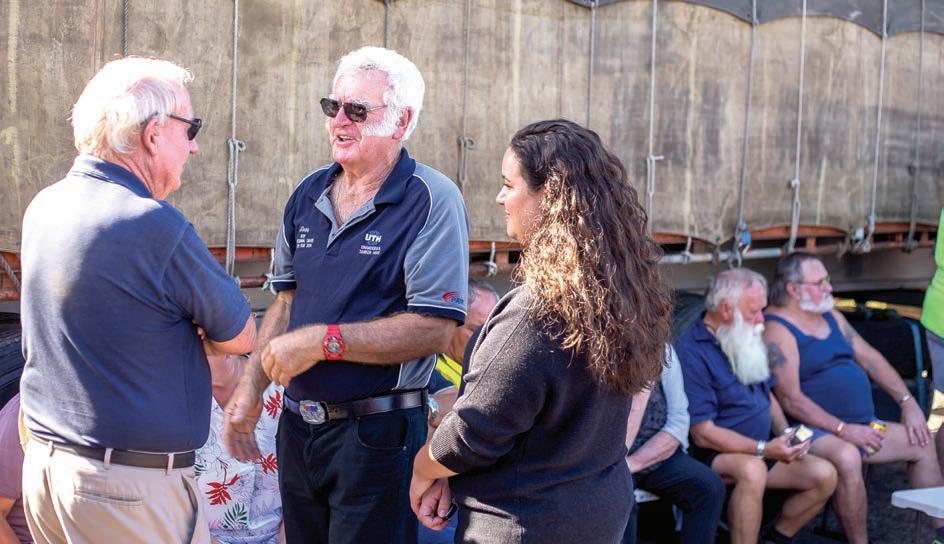
Top: Sleepy’s current steed – a Kenworth Legend 900
Above: Barry ‘Sleepy’ Grimson shares tales with old mates at the Razorback blockade’s 40th anniversary heavy police escort, but the point had already been made.
The eventual outcome was the abolition of the muchmaligned road tax, weight limits were raised from 36- to 39-tonnes and a moratorium on the repossession of trucks was introduced. A big win for the little guy!
The rest is already well documented by those who have researched the event more than I, but you get the idea.
Hello Comet
After the blockade, Sleepy sold his truck and went back to working for Jimmy Bond before settling into a role with Comet for 10 years.
“Working for Comet was a fantastic job. We were paid one hour’s pay for every 57km we drove. We would leave Sydney for Melbourne and when we got there we were taken by cab to a motel. After our rest, we would get a phone call one and a half hours before our truck was ready to go back to Sydney. This would give us enough time to freshen up and have dinner before we were again picked up by a cab to go back to the depot and head north again. The same was done for Brisbane runs.”
These days, as he has done for the past 16 years, Sleepy can be found at the wheel of a Kenworth Legend 900, owned by south coast-based company Unanderra Tanker Hire (UTH). UTH services the eastern seaboard of Australia, transporting bulk chemicals and liquid waste.
“UTH are a great company to work for. I started out with UTH driving a little Volvo before moving into a larger 600hp [447kW] Volvo, then later a Caterpillar-powered Kenworth SAR became available.”
Around the time of his 70th birthday, Sleepy was driving to his home after work when he spotted a lot of fancy lights in his driveway. Upon moving closer he identified the sparkling white T909 parked in his driveway was signed up with UTH branding.
“The boss Jerrimiah [JJ] had surprised me with the allocation of the new Kenworth [tanker] as a birthday present,” Sleepy says. “My wife had known all along, but didn’t let on.”
Similarly, as a 75th birthday present, Sleepy was handed the keys to a new Kenworth 900 Legend.
I asked Sleepy if he was planning to still be driving long enough to get an 80th birthday truck? He replied: “As I get older the job has become easier.
“With the compliance and regulation we adhere to it’s a lot easier than years ago. If I had to work like I did in the ’70 I wouldn’t be able to carry on, but these days all you have to do is be safe, cart the freight and get fair reward for what you do.”
Sleepy still holds a B-double licence and dangerous goods accreditation, and shows no signs of slowing down after nearly 60 years and millions of kilometres on the road.
Maybe JJ should start looking for a new truck and 80 candles?
NatRoad Warren Clark

Price hike inaccuracies
Despite government thinking, increasing fuel prices does not equal increased industry revenue
tolling, unacceptable landside port charges and stamp duty on the purchase of newer vehicles.
Stamp duty is a financial disincentive to buy newer, safer vehicles and it adds a further three per cent to already increasing costs of new trucks.
NatRoad continues to lobby governments at all levels to address these concerns. If you would like to add your voice to this continuing effort to keep charges and costs in-check, contact the NatRoad team on 1800 272 144 to let them know your experience with contract price negotiations.
If you need any professional advice on contract management NatRoad’s experts are able to assist and advise you throughout the contract process.
THE GOVERNMENT recently announced a 2.5 per cent increase in heavy vehicle registration and road use charges from July 1, 2021. The state governments wanted to increase these charges by over 10 per cent, but the federal government has agreed to a 2.5 per cent increase only; the first increase in two years. The National Road Transport Association (NatRoad) has fought to keep this increase as low as possible.
It seems that many in the state governments believe that an increase in operating costs can automatically be passed on to the customers of road freight companies. But the reality is different: very few operators have that kind of bargaining power.
The Heavy Vehicle Charges Consultation Report (Consultation Report) was released by the National Transport Commission (NTC) in January this year, where road freight industry stakeholders, such as owneroperators, were asked for their views on the proposed increases in registration costs and the road user charge. One of the questions asked was whether those increases could be passed on to their customers.
NatRoad made a submission explaining that any changes to price are often regulated in one-sided contracts that are prepared by the customer. Customers wield significant buying power and almost always have a standard form contract that they require transport operators to adhere to if they want the work.
NatRoad’s submission demonstrated that that the view owner-operators can pass on most cost increases is deeply flawed. For example, the experience of NatRoad members is that increased fuel charges actually lower profit margins, a matter evidenced in the recent COVID-19 induced recession.
In fact, many of the customer contracts we examine show that with ongoing, longerterm contracts, the customer builds in a decline in prices for the transport operator under an assumed productivity increase in the range of 5 per cent per annum. These contracts are often presented on a “take it or leave it” basis and it is for that reason that urgent reform of the unfair contract law is high on NatRoad’s policy agenda. Quite simply, these contracts drive down operator profits.
FINANCIAL DISINCENTIVE
NatRoad has previously argued the need to consider a range of other charges that apply to the heavy vehicle sector when assessing increases in government charges. That discussion has focused on increased costs of doing business through mandatory
WARREN CLARK, NatRoad’s chief executive officer, has more than 20 years’ experience leading and developing business for emerging companies. Warren has held the position of CEO at various companies and is a certified chartered accountant.
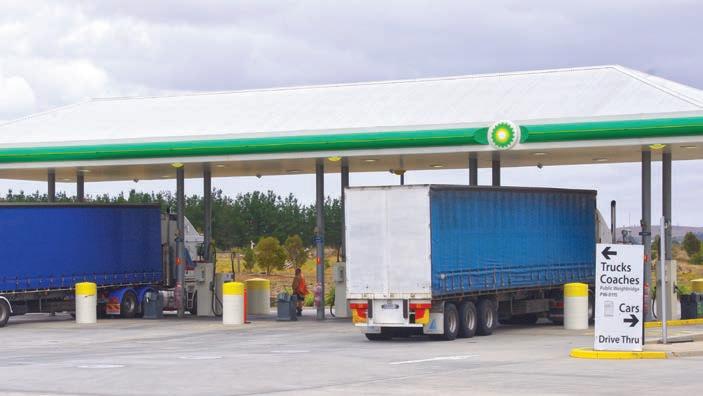
INNOVATIVE TARPING SOLUTIONS FOR EVERY NEED Cover your load!
Australian Distributors of
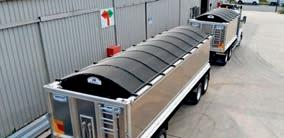
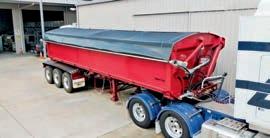
Wind-out Hood Tarps Dual Arm Systems
Long Block Waterproof tarps Roll-Rite Gearmotors Single Arm Systems
Tarping system components & solutions
• Dual Cable Wind-out Tarps • Pivot Arm Systems • Electric Gear Drive Motors • Single Cable Wind-out Tarps • Electronic Controllers • Waste Tarps • Pull-out Tarps • Waterproof Systems • Roll-over Tarps • Asphalt Tarps
NEW HEAVY-DUTY GEARBOXES
New Heavy-Duty Gearboxes designed for the Aussie Market Updated high strength composite casing Up to 180 Nm of torque, keeping operation smooth and your tarp tight Easy to install and operate with Retractable Tarp’s one touch tarp controllers. Hardwired and wireless control options available Get yourself covered today! OUT NOW!
BRAND NEW EASY TO USE WEBSITE

Visit www.retractabletarps.com.au or call 07 3889 9611 today!
RUN WITH MAX

Meritor, a leader in braking technology, has designed its latest range of MAX premium brake pads to withstand the toughest conditions in heavy duty trucks, trailers and buses
MAX pads are designed especially for heavy brake usage with high brake temperatures, such as in city buses, garbage trucks, coaches and other frequent start-stop applications.
While Meritor Australia has traditionally focused on the truck and associated aftermarket segments, globally Meritor has always had an extensive portfolio of aftermarket products to suit bus, trailer and industrial off-highway applications. By leveraging this global portfolio and the proven sales success seen in other markets, Meritor Australia has recently been able to introduce several new product offerings, each specifically selected to ensure they will suit Australian conditions. The MAX premium brake pads are the latest addition to this aftermarket product line-up and represent the next step-up in performance and durability from the popular MDP3000 standard series.
“Our European counterparts have experienced substantial success with the launch of the MAX pad range, so we have decided to introduce this to the Australian and New Zealand market. We are confident about the opportunity Down Under, particularly among high-usage waste trucks and bus fleets,” says Patrick Jose, Meritor Australia’s product manager.
“Customers who don’t want to compromise on performance now have access to a product that can also significantly lower their ongoing owning and operating costs. What’s more, they also have the peace of mind of knowing they are fitting a quality product from an original equipment [OE] supplier.”
Quality is always at the forefront of Meritor’s philosophy. To ensure this, the proprietary Meritor M550 friction material used in the MAX pads was tested extensively at both the Meritor testing and prototype laboratory in Cameri, Italy, as well as an independent laboratory. This revealed an outstanding friction coefficient and low wear levels of both pad and rotor when compared with original and aftermarket products, says Meritor.
In fact, the MAX pads so far exceeded the ECE R90 requirement in Europe that Meritor refers to their performance as ‘R90 plus’. Other features that enable the MAX pads to cope with consistent hot brake temperatures of up to 500 degrees Celsius include a thick backing plate with wire mesh securing the pad and preventing separation under high shear load applications. Meritor MAX pads are also hard stamped with ‘MAX’, including the last three digits of the application number, batch code and date for easy identification and complete traceability for its customers’ convenience.
The MAX pad range is now available across Australia and New Zealand through Meritor’s extensive distribution network and OEM partners and supported by Meritor’s aftermarket warehouse and customer service team based in Derrimut, Australia.
